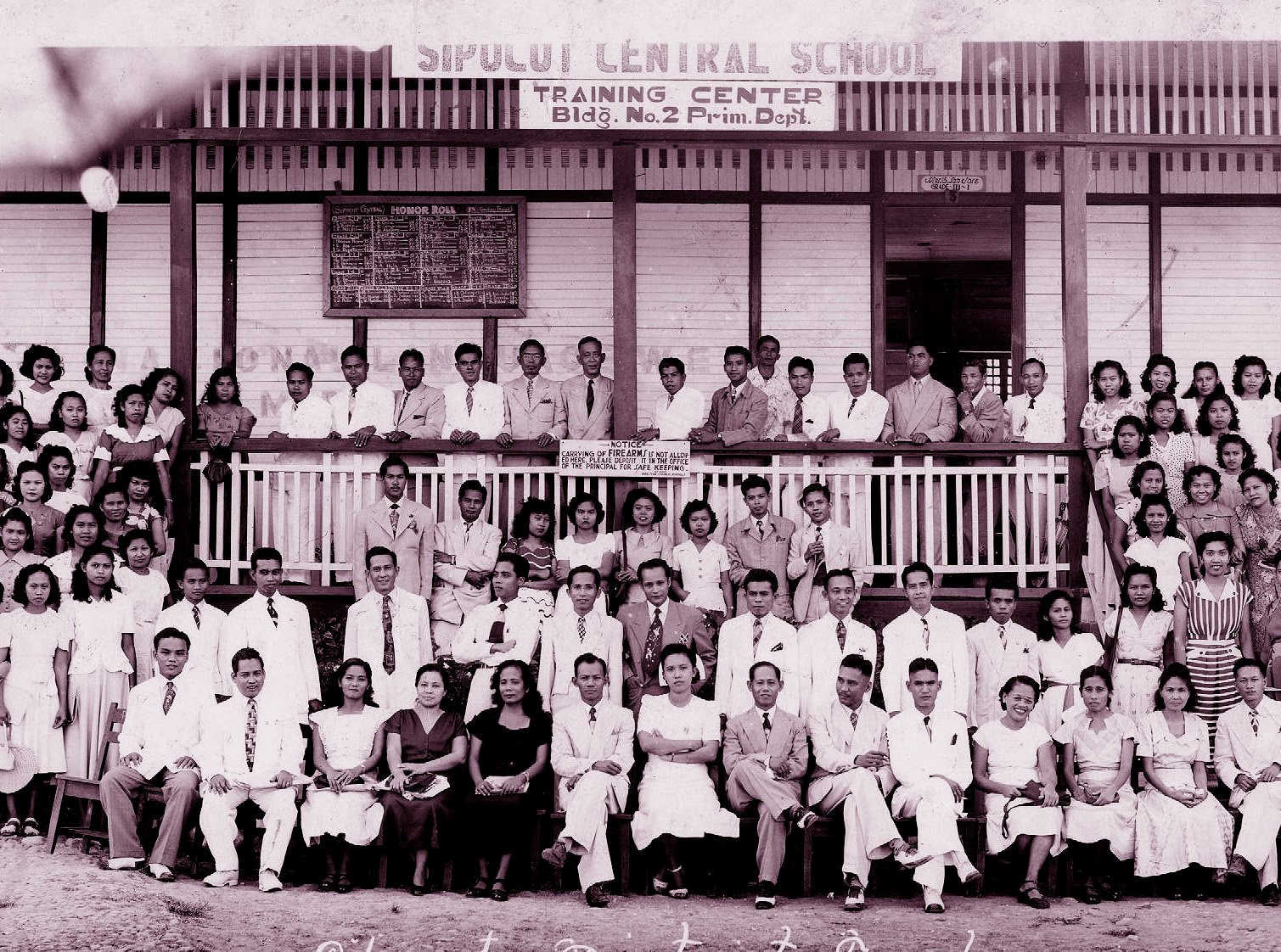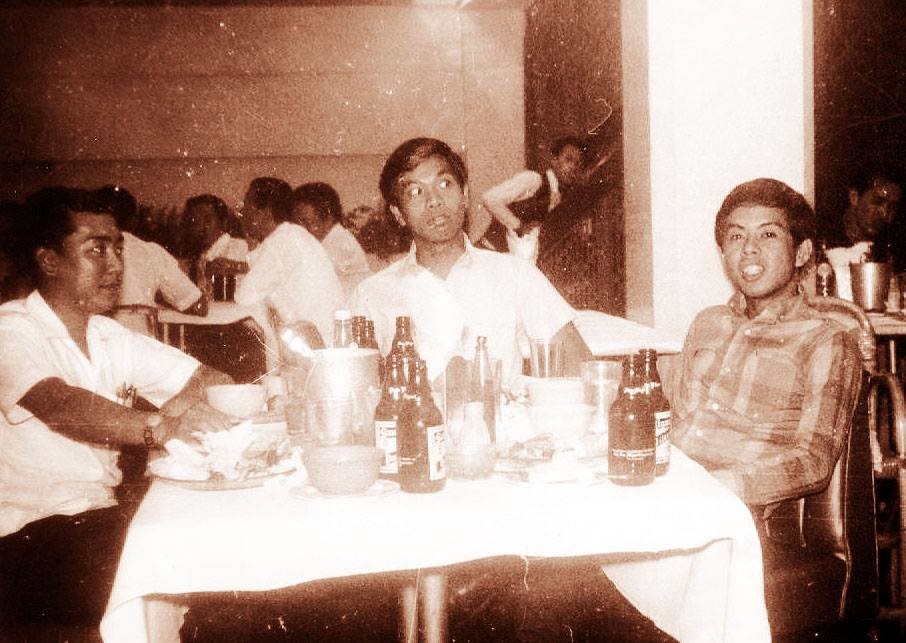Sipocot and the troublesome HuksBy Renato Perdon, Sydney, Australian Connection
(From Renato Perdon collection of historical writings)
WITH the forthcoming town fiesta this year, I am posting what I could remember of my childhood in Sipocot, where I grew up until I ventured on my Manila adventure in the early 1960s.The relocation of our family to Sipocot due to the impending encounter between the military and the New People’s Army (Huks) in the later part of 1949 faced us with new adjustment, particularly in our way of living.In Napolidan, we had a simple barrio life and we enjoyed very much the rustic existence.

There were only few thousands residents, but there was a strong bonding among the members of the community. Neighbours know each other and community activities were supported. My father was regarded as one of the community leaders. He established the first barrio school in Napolidan in 1948-49. He was a veteran teacher with 22 years of teaching experience behind him, He was primarily assigned to start a school for the children of labourers and officials of the Philippine Lumber Company which was relocated to the Bicol National Park.
The company left its old site in Catabangan in Quezon province. The following year, the school was expanded with Miss. Trinidad (Zenaida) Fernandez assigned to take charge of the extension class.In September 1950, the Huks entered again the barrio and held their meeting and tried to convince the people to their sides.
The members of the community were asked to contribute food and clothing. In January, the following year, the operation of the sawmill temporary was affected because of the Huk problem. The residents were in constant fear and never at peace. Soon, people evacuated to the neighbouring barrio of Villazar and the town of Sipocot where our family went. Others went to barrio Sooc, and Lupi, along the national highway.
When Napolidan lost its population, the Huks started to stop and held up passengers bus and cars passing the old national highway. Many could still remember how the Huks stopped an Alatco bus, the Patranco bus of the Bicol region. There was also a big Coca-Cola delivery truck used by its agent that was held up. Subsequently, all kinds of cars going and coming from Sipocot were stopped and asked to contribute and if no money could be collected, they resort to grabbing jewellery, and other valuable belongings of passengers.
It looks to me now that it was the beginning of the revolutionary tax the NPA of today similarly imposed on the local population. They also killed two Chinese agents of the soft drinks company.In the middle of 1951, through a representation made by the lumber company’s general manager, Mr. Gochuico, a platoon of the 10th BCT was stationed in Napolidan. Former residents of the barrio slowly returned, the school opened again and the sawmill commenced its operation again.
But, our family remained in Sipocot where all of us children were attending primary schoolSipocot, a small town nestled in the foothills of an undulating terrain with their crown of verdant forests extending though the border of Camarines Sur and Camarines Norte. It was separated as a barrio of Lupi in 1801.
The town experienced a booming economy due to the use of its railroad station and facilities by the Philippine Lumber Company. Lumber products from Napolidan sawmills were brought to the company’s lumber yard in Sipocot located between the second railroad line and the main road of the town, called Saint John Avenue where our house was located. It was the point of transport for all lumber products, mainly wooden plank loaded on train wagons, for various point of the country, south and north.
In many cases the whole tree, with its branches also cut off and loaded on the wagon. For the first time, my parents decided to have our own family house. It stood next to the lumber yard. It was a two storey wooden structure with galvanised roofing. It was made for a big family like us, six brothers, an aunt, and my parents.
Before that, we had a nomadic existence, our family moved a lot. We have rented countless numbers of houses. The length of time we stayed in a place or town was determined by the teaching assignment given to my father.
Since my parents’ marriage in 1938, the family had relocated to at least six towns (Bao, Currey, Pili, Tres Reyes, San Juan, and San Roque, all in the town of Bato, and San Roque in Nabua in Camarines Sur. After the evacuation from Napolidan my father was given a brief stint teaching job in Sipocot Elementary School He received his new assignment for another rural post, which he liked best.
His new assignment was another barrio called Banga, also in Lupi, Camarines Sur. It was located in a secluded area that could only be reached by train. Now Lupi is accessible through the present Quirino National Highway, built where few of the so-called railroad towns in Camarines Sur were integrated and connected with the network of national road that travels from Manila to the Visayan islands in the south. Sipocot was the last town my father decided to raise his family, although he was still away teaching in Banga during the weekday.
We would see him only during weekend.Sipocot was one of the early towns built by the Spaniards when the extended their influence to the Bicol region. Originally it was a barrio of Lupi, and connected to the old highway, where the old dangerous ‘bitukang manok’ is found, between Camarines Sur and Camarines Norte
It was then the only way to reach Manila passing through this dangerous zig-zag road. Almost all people in Camarines Norte, if they want to travel to Manila, they would take the Bicol Express from Sipocot Railway Station.The town’s economic development was brought about by the relocation of the Philippine Lumber Company from Catabangan, another railroad town located up northern part of Camarines Sur. Sipocot will always be part of my childhood experience. It was from the said town that I started to observe people around me, particularly when I was already doing my elementary education.
My younger brother, Nonoy, was born in Sipocot. It was also the place where we first experienced poverty. This was after my father suffered a massive stroke that left half of his body paralysed for seven years until he passed away.It was the time that the only source of income for the family to survive was the little pension received by my father as a retired, due to sickness, public school teacher.
Thanks to my dependable and hardworking mother who operated a dressmaking shop on the ground floor of our house in Sipocot that all of us, except for two adopted brothers who left the family early to seek their future in Manila, completed our secondary education.
Today, the lumber yard is gone. On the site of our house is a small wooden structure being used for furniture making. And what is left of the old Sipocot Railway Station of my youth, the gateway to the Camarines Norte, is a dilapidated or run-down building waiting for the revival of the Bicol Express.
It is what is left of the popular train station canteen managed by the Ico family of College, Laguna, although a new structure is now built to serve as the train station for the present railway line to Naga City.










Leave a Reply